The Ministry of Defence (MOD) has awarded a seven-year contract worth £120 million to Qioptiq Limited for the continued procurement of the TALON Fused Weapon Sight – a cutting-edge image intensifier and thermal imager system.
This contract, placed by the Dismounted Close Combat project team, is part of the broader Assault Rifle In-Line Low Light Sight (ARILLS) capability, designed to enhance the operational effectiveness of British Army assault rifles in low light and difficult conditions.
The contract, which covers up to 10,000 TALON systems over the duration of the agreement, is critical for the MOD’s capability in close combat operations.
As noted in the contract award notice, “There will be no initial quantity from the outset. However, there is an estimated TFR of 10,000 TALON systems over the life of the framework.” The framework agreement has been placed with Qioptiq Limited, a leading supplier of advanced optical and sighting systems based in Denbighshire, with future purchases subject to financial approval on a case-by-case basis.
This contract was awarded under a negotiated procedure without prior publication of a contract notice, justified by the MOD due to the technical complexities involved.
The MOD explained, “This is due to strict technical impracticality for any other economic operator other than Qioptiq to achieve the same technical requirements/output performance provided by the TALON system.” Qioptiq’s unique ability to deliver the TALON Fused Weapon Sight – which offers dual-channel capability combining image intensification and thermal imaging – ensures the necessary interoperability with the existing TALON fleet.
The MOD further noted Qioptiq’s expertise’s importance, stating that the company “has the necessary know-how/access to information to manufacture and provide the TALON system, to meet the Authority’s requirement.”
This expertise, the firm say, ensures that the TALON system will continue to play a vital role in the Army’s close combat operations, offering advanced sighting capabilities that enhance situational awareness and improve operational effectiveness in challenging environments.


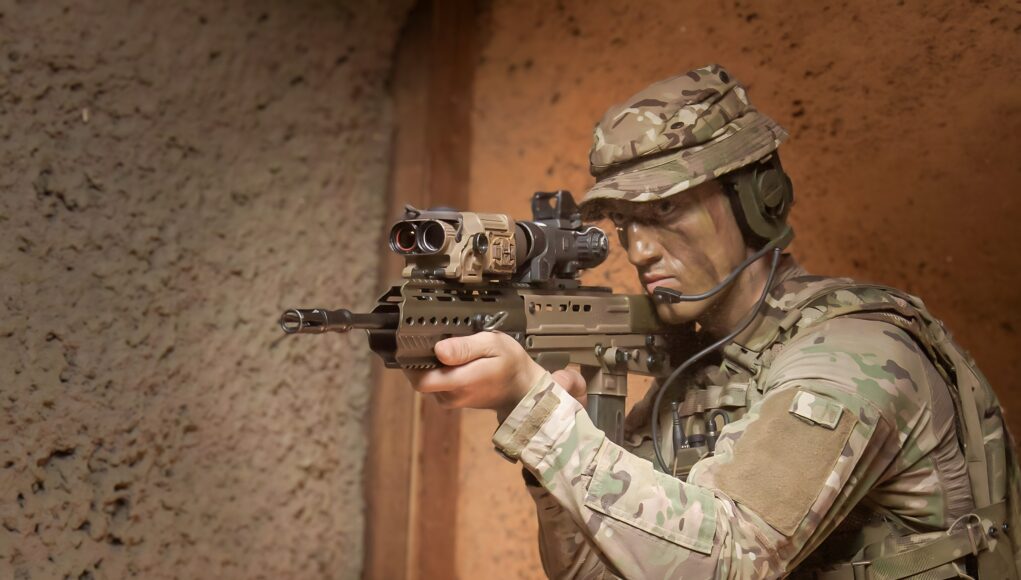
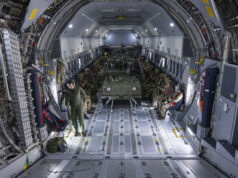



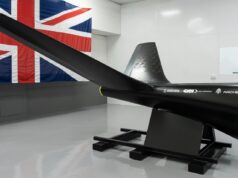
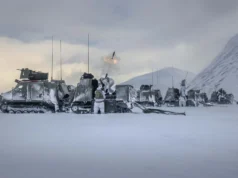

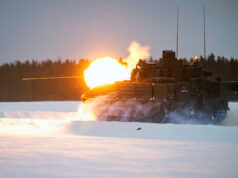

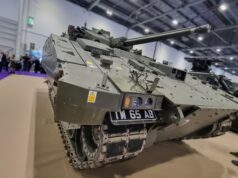

£12k per sight seems excessive. they could buy 10k of the KS1 issued to the RM with sights for that amount.
unbelievable really
This is cutting edge stuff. It’s a Thermal Imager and an Image Intensifier with the images seemlessly fused together in one.
The sight’s on KS1 are not night vision….in fact they’re designed for additional night vision systems to be added in front of them at extra cost….
I would be interested to see how good these are compared to say a £600 Arken Zulu.
understood on KS1 sights, but its still an awful lot of money for a sight or am I wrong?
I get 5-7k for top of the range sights – £12k when we are buying 10k seems hugely expensive to me and doesn’t pass the sniff test (again I am no expert)
And if they get less than the 10,000 (the contract is up to), then the unit cost goes up!
A decent, not military grade, civilian thermal sight will set you back £4-5k, add in fused image intensification….you can’t because there are none available…
Then add in training, support, manuals etc etc…
It’s par for the course
thanks for explaining – I will now shut up
It’s a reasonable point you make though. We’re fixated on getting gold plated solutions sometimes. This sight is really good….and 10,000 arguably equips most of our infantry…but where does that leave everyone else?….thats why I mentioned COTS solutions lower down…by all means lets give the people at the tip of the spear the right gear…but other parts of the Army also need night vision…they’re rather good for spotting drones for example…
ideally we should cycle the equipment through the force structure, so as the tip get gucci, the older stuff they have been using goes down the food chain. once its broken its gone imo, buy new or use for spare parts if possible. This lifecycling approach is used in many industries and extracts max value from assets
I mean we do. That’s why some units still have SUSAT’s and Ironsights on L85A2’s with green furniture, and others are operating with L403’s with a modern variable sight and in line thermal optics, and others are in the middle with L85A3’s with LDS’s.
Not really. You have to remember this is a small, rugged, squaddie proof, thermal imagining AND NVG system. 10+k is really the ball park that will go to.
thanks – understood
To be fair the elcan Spector which is the civilian version of the sight on the SA80a2/3 is about 2/3k and that’s just a 4x optic
Progressive discount maybe?
They’ve not signed on the line for 10k units.
So maybe the more of these 10,000 units gets sold the greater the discount on the next one.
Businesses give block discounts in exchange for guarantees, like actually paying for it, ordering the units up front which gets the business a guaranteed revenue stream, so they can plan their work around this contract.
Also perhaps guaranteed revenue gets them favourable interest rates when borrowing money? Guaranteed income means guaranteed loan payments, a safe, profitable investment for the bank so they pass incentives down to the gun sights company in the form of lower interest rates.
The incentives are there to keep the client shopping for loans at this bank, because for the optics company with money in the pocket, it’s a buyers market for purchasing money from banks.
As we buy more, we’re “trusted” more and are rewarded with further discounts.
Ooh, you know what?
Maybe that painful 12k price is there as an incentive for the MOD to buy more, quickly, to get the cost per unit down on whatever finances reports they pass up to their government liaison, get it?
The faster you buy, the less likely your procurement project gets cancelled due to high per unit costs.
Glad to see I’m not the only one thinking this. I’ve done a brief bit of searching but have found scant information around Talon that could help me understand it’s huge cost.
Even if it is cutting edge, surely others are making or have made similar systems? Im struggling to se it being “cutting edge” enough to justify the cost.
Understanding project procurement a bit, I appreciate the overall cost will more than likely include both research and development and in life servicing. But the cost still seems prohibitive.
the KS1 sight is not a night sight – you need this on top to conduct night firing.
This is good news as ARILLS is an excellent bit of kit, and Qioptiq are made in the UK…there has been some inroads to the UK market by Greek and Israeli companies recently, and we really need to protect home grown capability, particularly if its good gear.
But they aren’t cheap…and 10,000 will only go so far…
We could order even more, at a price, but we often ignore COTS solutions…you can purchase a decent, though admittedly inferior, thermal sight from the likes of Pulsar, ATN or Hik for £2k a pop…none of those are UK providers (Pulsar are Lithuanian and made in Europe, ATN is US, Hik are Chinese..and should not be used) but they illustrate the art of the possible. Adding another 10,000 of these style sights would effectively give every infantryman a thermal sight for around £30m on top of the ARILLS…
It’s a similar story with drones….great we’re investing more in them….but purchasing 2,000 Autel or Mavic 3T off the sheld (and flashing the firmware) for around £7m would give a huge training benefit (imagine being able to check camouflage from above on an exercise…). Buy them….set up a basic training regime and chuck them out to the troops and let them figure out how best to use them…there are a lot of keen people out there…
Qioptic was taken over by Excelitas an American company in 2013, not sure he the sights are actually manufactured in the UK.
They still do most of their manufacturing at St Asaph in Wales.
It really is, the only thing I’d complain about is they’re bloody hard to see anything through in daylight.
Great bit of kit, great addition to the infantry’s inventory, but the single biggest issue that will always be a limiting factor, is the platform it is mounted on.
As with the armies plan to ensure every soldier has the ‘right kit, for the right job’ and crucially, enough of it and before any possible, future increase (🙏) in overall troop numbers, the weapon system that is currently fielded, is still, sub-optimal. It would be very encouraging if there was a big light at the end of that very long tunnel too.
Project Grayburn the replacement for L85A2/A3 was due to go out to tender next year for the replacement Rifle for an in service date of between 2027 to 2030, but rumour has been delayed due to lack of funds. This will be an AR platform with various barrel lengths and optic sights depending on the user role & this be in 5.56 mm for general service, more specialist users may go to 6.5 or 6.8 mm.
To be honest there are some indications that the U.S. army is going all out for its infantry weapon, squad support weapons and medium MGs to all move to a 6.8mm round. Essentially moving from the 5.56mm and 7.26mm.
The British army really need to consider if they are going to do the same.
If that is the case we will go for a two calibre fleet, a 5 foot AGC clerk does not require a battle rifle weighing 14 pounds inc sight & a 20 round magazine with a working pressure of 82000 PSI with its composite brass & steel cartridge case. Female soldiers couldn’t even handle the SLR, that’s why they where issued with the SMG prior to it’s replacement with the L85.
I’ve seen women handle a GMPG, pretty sure “they couldn’t handle an SLR” is just 1980’s sexism.
I agree Dern, but a GPMG is fired from a bipod.
Wait, you’re seriously making an argument about being able to fire the weapon system? Okay mate, I think that’s a worse position to goalpost shift too.
L129 (A 7.62NATO rifle that weighs almost exactly the same as a L1A1 SLR) ACMT requires firing from a variety of positions, including standing unsupported. Women pass that all the time.
Dern, I apologise if my comments appeared sexist, they where not intended to be, I have also been on ranges with women firing both L7A2 and L129A1’s, my original comment was about the MOD are not going to be equipping everyone with a 6.8mm rifle, as everyone keeps banging on about, because the Americans are.
Every country in NATO has either replaced there main rifle or are about to all in 5.56mm, so this calibre is going to be around for many years to come.
Again I apologise if my original comments where misconstrued.
Oh no, sorry that’s not what I meant. I meant that the 80’s, especially the army, from the 80’s where sexist, and so the Army back then going “Women can’t handle an SLR,” isn’t something to base modern decisions on if that makes sense?
I agree there is no rush to switch calibers, we waited ages after the Americans went to 5.56 to make that change.
Oh, so glad I have you to tell me what I’ve seen with my own eyes lol
Jog on.
Your welcome when your talking crap I’m going to call it out women cannot handle the GPMG anywhere near like men can this is just a fact please tell me where u have seen women tabbing with 100lb rucksacks 10k with a GPMG I will wait for the reply to your fantasy
Jungle, Kenya, basically anywhere my unit has deployed, the gun gets passed around and everyone takes their turn on it, male or female.
Just because you’re a raging sexist who can’t imagine women ever keeping up with the blokes doesn’t mean it doesn’t happen.
Ah, and there’s the strawman argument.
Please, by all means, show me where I said that “women are as strong as men” (which btw is a nonsense statement).
I don’t think there are any indications of that whatsoever. They’ve doing troop trials but they still only have the intention of purchasing a very limited number…and the per shot cost is eyewatering at present…
It’s also proprietary…so we couldn’t buy the ammo from anyone else but SIG….that doesn’t work for us or other NATO members in the slightest…
They have just finalised funded for 112,000 XM7 personal weapons and around 13,500 XM250 squad support weapons…with 18,000 rifles for next year….they are also looking for a kit to change M240 to 6.8mm. They have clearly now stated the XM7 will replace the M4 in service and the XM250 will replace the M249..they are also building a whole new munitions plant to supply the army with 6.8mm rounds..
The have also issued the first battalion with the replacement rifle and squad support weapon so it’s now in active service.
Thats a pretty strong set of indicators…they may keep the 5.56 round for second line forces but the primary squad weapons of the U.S. army moving forward from 2025 will be 6.8mm.
Where did you hear that rumor?
Honestly, I’ve used it with an L85A3, the rifle isn’t really a hugely limiting factor. Compared to the old LLM it’s a complete gamechanger at night.
Qioptiq Limited, or Excelitas or whoever they are… I’m sure I read somewhere, that they are a subsidiary of Thales UK?
Either way £120,000,000 contract over however many years, for ‘up to’ but ”no more than’ 10,000 sets of these things. Yet another example, of the defence industry ‘robbing’ the British Taxpayer.
Take take take, using different names, setting up subsidiary businesses, allowing the same old companies/people/lobbyists to cash in, at the MOD’s expense.
Correct me if I am wrong, but these sights have been around since 2021 have they not?
They are also available online, if you have very deep pockets! (an example) Excelitas Talon II – Luminary Guard Technologies
I rember when the SUSAT was cutting edge, with the needle what went red at knight time ,ekk . I’m getting old , bugger I am old
Not directly related but literally just read about the new Duovox pro monocular sight that seems to be amazing from the video included in the article on New Atlas for such a rediculously cheap price. Didn’t realise just how good night vision is becoming.
‘Rather than employing AI to render the colors, Duovox uses proprietary “true-full-color technology” – though makes no effort to explain how that works – for a claimed 99.99% color accuracy, as well as “clear, sharp visuals in motion.”
The world’s military and some law enforcement use varients of such sights which cost a lot less than the unit price you are paying. From experience, “cutting edge technology” is seldom better and never cheaper than what it replaces, or possesses those very important combat credentials and a Gold Star grunt survivability certificate.